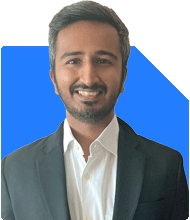SWP for Long Term: Securing My Son's Future with Autism
Ramalingam Kalirajan |10872 Answers |Ask -Follow
Mutual Funds, Financial Planning Expert - Answered on Aug 05, 2024
He has an MBA in finance from the University of Madras and is a certified financial planner.
He is the director and chief financial planner at Holistic Investment, a Chennai-based firm that offers financial planning and wealth management advice.... more

Good evening Sir ; My queries are regarding SWP for really long term periods appx. 40 years . I am expecting a corpus about 3Cr. in the year 2030 when I will be retiring . My son is having ASD ( Autism ) thus very less scope to earn and manage finance independently in his carrier . So , I am planning to manage my corpus such a manner so that he will survive from this corpus till his 60 years of age . For that , I need to generate sufficient fund for more or less 40 years i.e. till 2070 . I am expecting a corpus of Rs. 3 cr. at the year 2030 , 100 % of which will be contributed by MF . Now , I am thinking to put the entire sum in SWP , in order to generate a regular monthly income because I don't see FD or other regular income schemes are not viable to produce a constant flow during such a long period . That's why , I am seeking your novel advices / guidelines in order to prepare a sustainable roadmap towards my future financial planning . for further information , I am assuming three of us will stay together till 2050 & my son will be alone say another 20 years . Also , I am expecting to withdraw 1.5 L per month from 2030 onwards which is divided into 3 equal proportion ( 50k x 3 ) , assuming there will be an average inflation of 6% throughout the time period ( as per inflation history of India since independence ) of 40 years . Now my questions are : 1. Is SWP the right method to sail through this journey comfortably ? Seek your advice for any better path / combination . 2 . What's the tax implication in SWP ? Kindly elaborate a little . 3 . If possible , kindly suggest the best fund ratio for SWP understanding my facts . I am available to provide any further information regarding this . thanking you in advance ; very best regards ; Suprabhat Jatty
Addressing Your Questions
1. Is SWP the Right Method?
SWP is a viable option for generating a regular income from your corpus. It allows you to benefit from potential market growth while providing a steady cash flow.
However, it's essential to consider the following:
Market volatility: The value of your corpus will fluctuate with market conditions. This can impact the sustainability of your withdrawals.
Inflation: You've correctly identified inflation as a significant factor. It's crucial to ensure your withdrawal amount keeps pace with inflation to maintain your purchasing power.
Emergency fund: Having a separate emergency fund is advisable to cover unexpected expenses without dipping into your SWP.
2. Tax Implications of SWP
Debt Fund capital gains: If you redeem units, you'll pay capital gains tax, which is added to your income and taxed at your applicable income tax slab.
Long-term capital gains in equity funds: If you redeem units held for more than a year, you'll pay a long-term capital gains tax of 12.5% on the gains exceeding Rs. 1.25 lakh in a financial year.
3. Best Fund Ratio for SWP
Diversification is key. Considering your long-term horizon and the need for income, a balanced approach is recommended.
A mix of equity and debt funds can help manage risk and return.
The exact ratio will depend on your risk tolerance and the market outlook. A typical starting point could be a 60:40 equity-debt mix, but this can be adjusted based on your financial advisor's recommendations.
Regular rebalancing is crucial to maintain your desired asset allocation.
Ensuring Long-Term Sustainability
Regular Review
Annual Review: Regularly review the performance of your investments and the adequacy of the withdrawal amount.
Adjust Allocations: Adjust the equity-debt ratio if needed to maintain the corpus value.
Diversification
Multiple Funds: Invest in a variety of mutual funds to spread risk and enhance returns.
Rebalancing: Periodically rebalance the portfolio to maintain the desired equity-debt ratio.
Professional financial advice: Given the complexity of your situation, consulting with a financial advisor can provide tailored recommendations.
Final Insights
The SWP strategy is suitable for your long-term financial goals. It provides a stable income while allowing for potential growth. Keep in mind the tax implications and the need to adjust for inflation. A balanced mix of equity and debt funds will help in managing risks and ensuring sustainability.
Best Regards,
K. Ramalingam, MBA, CFP,
Chief Financial Planner,
www.holisticinvestment.in
You may like to see similar questions and answers below
Ramalingam Kalirajan |10872 Answers |Ask -Follow
Mutual Funds, Financial Planning Expert - Answered on May 11, 2024
Vivek Lala |323 Answers |Ask -Follow
Tax, MF Expert - Answered on Jul 09, 2024
Ramalingam Kalirajan |10872 Answers |Ask -Follow
Mutual Funds, Financial Planning Expert - Answered on Aug 27, 2024
Milind Vadjikar | Answer |Ask -Follow
Insurance, Stocks, MF, PF Expert - Answered on Sep 22, 2024
Ramalingam Kalirajan |10872 Answers |Ask -Follow
Mutual Funds, Financial Planning Expert - Answered on Nov 02, 2024
Radheshyam Zanwar |6735 Answers |Ask -Follow
MHT-CET, IIT-JEE, NEET-UG Expert - Answered on Dec 06, 2025
Dr Nagarajan J S K |2576 Answers |Ask -Follow
NEET, Medical, Pharmacy Careers - Answered on Dec 06, 2025
Mihir Tanna |1090 Answers |Ask -Follow
Tax Expert - Answered on Dec 06, 2025
Ramalingam Kalirajan |10872 Answers |Ask -Follow
Mutual Funds, Financial Planning Expert - Answered on Dec 06, 2025
Radheshyam Zanwar |6735 Answers |Ask -Follow
MHT-CET, IIT-JEE, NEET-UG Expert - Answered on Dec 06, 2025
Radheshyam Zanwar |6735 Answers |Ask -Follow
MHT-CET, IIT-JEE, NEET-UG Expert - Answered on Dec 06, 2025
Radheshyam Zanwar |6735 Answers |Ask -Follow
MHT-CET, IIT-JEE, NEET-UG Expert - Answered on Dec 06, 2025
Dr Dipankar Dutta |1837 Answers |Ask -Follow
Tech Careers and Skill Development Expert - Answered on Dec 05, 2025
Dr Shyam Jamalabad |108 Answers |Ask -Follow
Dentist - Answered on Dec 05, 2025
Dr Shyam Jamalabad |108 Answers |Ask -Follow
Dentist - Answered on Dec 05, 2025





























